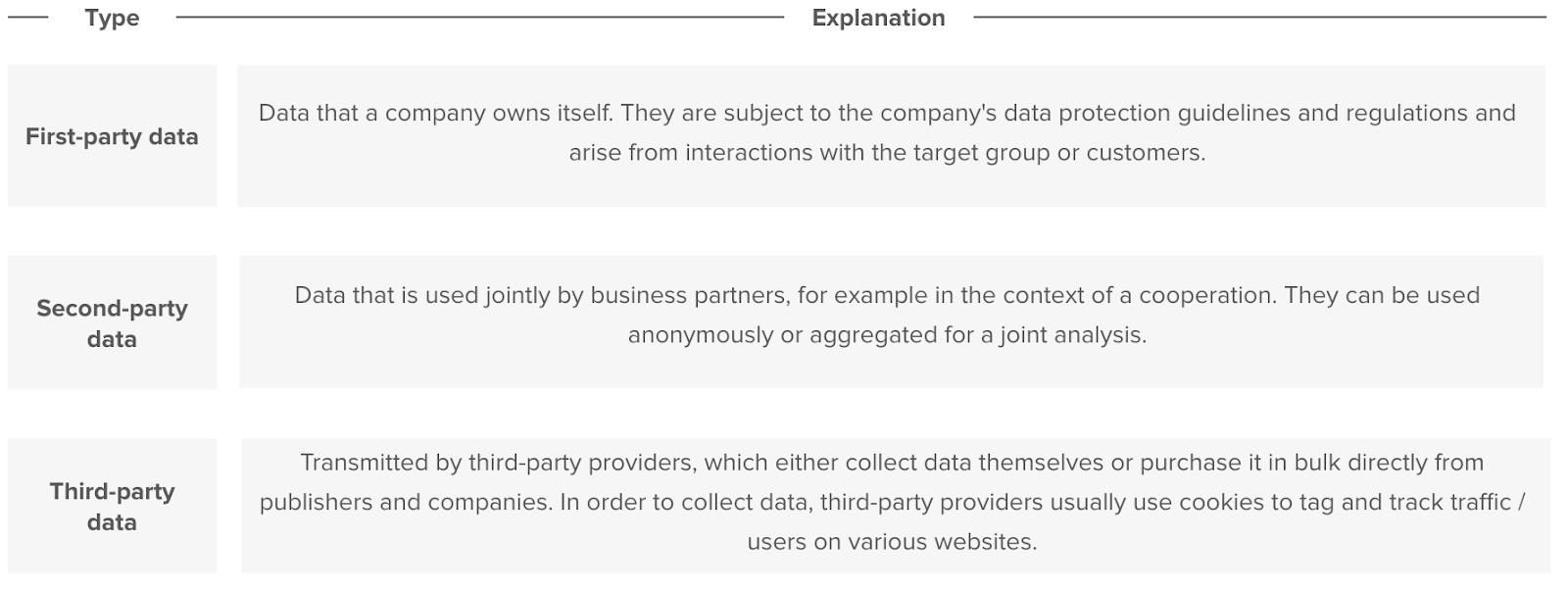The End of Third-Party Cookies
What it Means and How to Respond - Moving Away from Opaque Collection and Use of Consumer Data Towards a Decision-Oriented, Transparent, and Privacy-Friendly Future.
The internet is at a turning point. Google has announced the phasing out of third-party cookies by mid-2023, with Apple planning to follow suit. Given that these two browsers, Chrome and Safari, account for about 80 percent of the global market share, this has significant implications for the online world. However, to fully grasp the impact of this announcement, we first need to explain what cookies are and the different types of cookies that exist.

What are Cookies?
A cookie is a small text file stored in a browser used to access the internet. Most people have hundreds of cookies saved on their devices. The primary purpose of a cookie is to identify users and possibly create customized web pages or store login information for a website. Since a web server has no memory, the hosted website a user visits sends a cookie file to the browser, which is stored on the computer’s hard drive. This allows the website to remember the user and their preferences. This exchange of information enables the web server to use this data to present customized web pages to the user.
Cookies are thus highly useful as they allow modern websites to function as people expect, with an increasing level of personalization and extensive interactive features. This targeted use of cookies is what legislation aims to highlight. By requiring websites to inform their visitors and obtain consent, internet users are given more control over their online privacy.
Different Types and Uses of Cookies and Data
One of the most important attributes of a cookie is its "host" – the domain name of the website that ultimately sets the cookie. Only the host domain can retrieve and read the cookie’s content once set. If the host name matches the domain in the browser's address bar when the cookie is set or retrieved, it is a first-party cookie. In the context of advertising, first-party data belongs to the company itself.
If the host domain of a cookie does not match the one displayed in the browser bar when downloaded, it is a third-party cookie. Third-party data is provided by third parties who either collect or purchase data. To collect data, third parties typically use cookies to tag and track users across various websites.
There are also second-party data, which involve sharing or purchasing data from a "trusted partner." In the context of large B2C companies with multiple brands, second-party data can simply be the sharing of first-party data of one brand with another. Second-party data are externally collected first-party or partner data. This means the data primarily come from strategic partnerships or campaign data providing information about behavior, environment, technical conditions, or the number and duration of ad consumption. The data are collected by an external source (ad server, DMP, etc.). The sharing of external data by partners is usually contractually agreed upon (sharing model).

The AD Market is Changing. Zero- and First-Party Data are the Future.
As the industry loses access to most third-party data, the ability to target and measure will be impacted. Privacy protection and control over personal data will take center stage. Companies must not only collect and use data responsibly but also ensure that their efforts are visible to customers. Marketers often describe the advantage of first-party data over third-party data as the ability to target customers based on verified information.
Advertisers and publishers must now primarily rely on their own zero/first-party data or data from walled gardens, contextual targeting, and greater support from data platforms. This reliance on zero/first-party data requires the development of an internal data privacy strategy.
With Unidy, we enable companies to collect, centralize, and monetize first-party user data by seamlessly connecting individual service silos through a central user account and single sign-on. If you would like to implement your zero/first-party data strategy with Unidy, please contact us.
What is a Single-Sign-On and why is it important?
Unidy enables Single-Sign-On to provide a unified login experience for users across one or multiple brand platforms. But what is Single-Sign-On and why is it important at all?
How companies increase digital sales with Unidy
Collect - Increasing number of user profiles / Connect - Increase data fields and opt-ins per user / Convert - Increase revenue per user